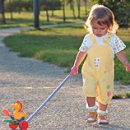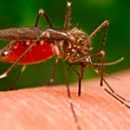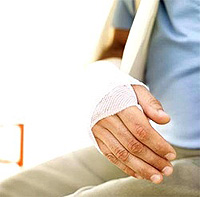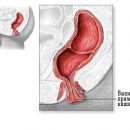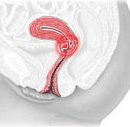Bleeding, arising when cut or more serious injuries, should be stopped as quickly as possible. How to do it?
Content
Bleeding is considered strong if:
- Blood beats from the wound jet;
- You have established that blood loss exceeded 250 ml;
- Bleeding does not stop for 5 minutes.
Strong bleeding
From a small wound, bleeding soon ceases spontaneously, but with severe injury, blood can be poured at such a speed that it does not have time to turn. Your main task is to reduce the blood flow in a damaged area, contributing to blood clotting in the wound and blockage of the damaged vessel. To do this, surpass the wound in one of the ways described below. Remember the general rule: a damaged part of the body is desirable to keep the heart level above. Do not try to rinse a deep wound with water or antiseptic. Once you have had the first help, call ambulance.
Nasal bleeding
Bleeding from the nose - the phenomenon is quite frequent and may be a consequence of even a small nose injury. If you started nasal bleeding, sit down slightly. Make sure you can breathe mouth, and tightly clamp both nostrils for about 10 minutes, which will allow the blood clot to form a damaged vessel. Try not to blow the nores for a few hours after cessation of bleeding, as it can break the blood clots.
Contact your help if the bleeding continues over 20 minutes or if you assume that the nose is broken; This is possible if bleeding began after a strong shock on the nose. Emergency medical care is required if the bleeding occurred after the head of the head: it may be a sign of a skull injury.
Small cuts and scratches
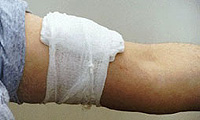 Bleeding from small cuts and scratches contributes to the cleansing of the wound and is usually shown spontaneously for a few minutes. Pressing a piece of pure cloth to the wound, you can stop it quickly. After the bleeding stopped, wipe the skin around the cut in the direction from its edges with clean gauze or rut. Clean the Rank itself should not be. Small cuts and even quite serious scratches are healing faster if they are not binning. The discrepancy between the edges of the wounds can be prevented by pulling them with strips of the leukoplower, but any cut is longer than 1 cm, most likely requires the imposition of seams. If it seems to you that you need to impose seams or that the wound is badly contaminated, as well as with a deep wound injection, for example, a nail, contact the nearest ambulance item.
Bleeding from small cuts and scratches contributes to the cleansing of the wound and is usually shown spontaneously for a few minutes. Pressing a piece of pure cloth to the wound, you can stop it quickly. After the bleeding stopped, wipe the skin around the cut in the direction from its edges with clean gauze or rut. Clean the Rank itself should not be. Small cuts and even quite serious scratches are healing faster if they are not binning. The discrepancy between the edges of the wounds can be prevented by pulling them with strips of the leukoplower, but any cut is longer than 1 cm, most likely requires the imposition of seams. If it seems to you that you need to impose seams or that the wound is badly contaminated, as well as with a deep wound injection, for example, a nail, contact the nearest ambulance item.
Healing of small cuts
Wipe the skin around the cut in the direction from the edges of the wound pure cotton swab, every time changing it. Antiseptics apply not to the wound, but on the tampon used.
Small cuts are healing faster if they do not binting. However, if the edges of the wound diverged, roll them and impose across the wounds one or two strips of the leukoplasty.
Chicken wounds
A deep wound applied with a contaminated object (for example, a rusty nail or an animal tooth) is very dangerous due to the possible penetration of infection, since the dirt is introduced deep into the tissue, and the bleeding from such wounds is very small and for their purification is insufficient. Loss of sensitivity, tingling or weakness arising after receiving deep brushing or cutting wounds may indicate damage to the toed nerves or tendons. With any penetrating injuries, it is advisable to introduce antibiotics and necessarily - anti-trust means. This will be done in the hospital for the appointment of a doctor.

